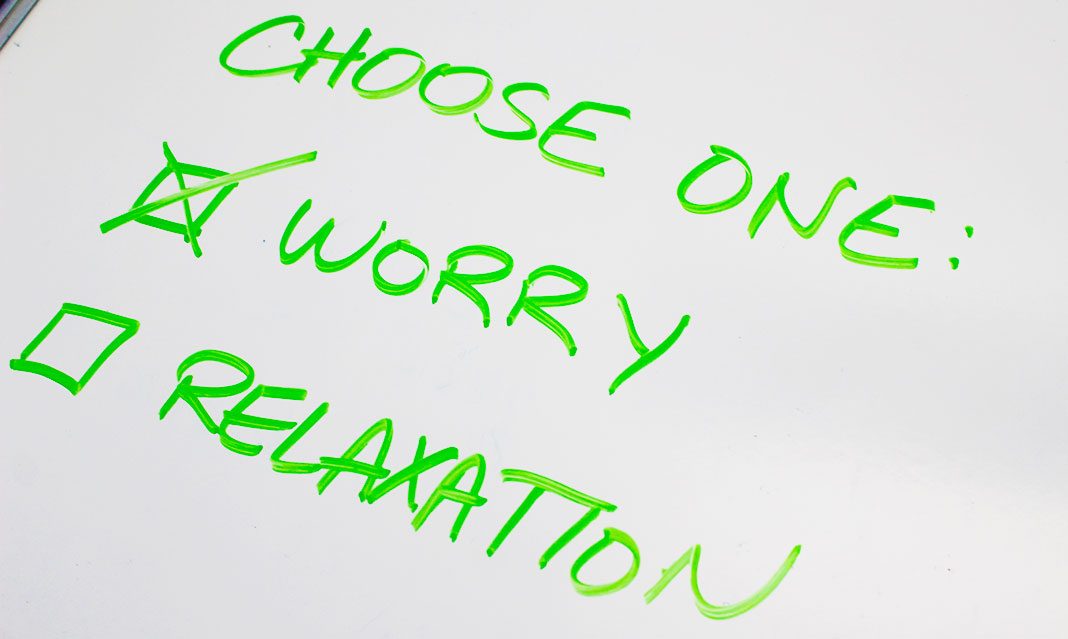Pennsylvania State University performed a study in 2019 that examined the relationship between anxiety and strategic behaviors, like relaxing. According to the study, even though relaxation is supposed to calm the body and mind, people with anxiety actively resist relaxation and choose to worry.
A study conducted by Hanjoo Kim and Michelle Newman from Pennsylvania State University’s Department of Psychology found that people who were more sensitive to shifts in negative emotion—quickly moving from a relaxed state to one of fear, for example—were more likely to feel anxious while being led through relaxation exercises. Newman, a psychology professor, believes that the results could especially help people who experience “relaxation-induced anxiety,” a paradoxical phenomenon wherein people become more anxious during relaxation training.
Previously, studies have suggested that some people dealing with anxiety can be diagnosed with specific relaxation-induced anxiety (RIA) traits, such as higher sensitivity to anxiety and a desire to have control over their emotions. However, previous studies have produced little proof of how these traits are related to RIA.
Thus far, repeated application of ‘Applied Relaxation’ (AR), a crucial component of cognitive behavioral therapy, has been proposed to improve RIA.
The major purpose of AR is to teach people coping skills that help them to relax and reduce anxiety responses. AR usually begins by teaching people how to progressively tense and release various muscle groups in a quiet, comfortable place. This technique is sometimes combined with diaphragmatic breathing; slow paced breathing through the diaphragm, practiced twice a day. Over time, patients are taught ways to achieve relaxation more rapidly and to use it as a portable coping strategy in response to anxiety triggers in their environment.
AR aids in decreasing anxiety and physiological tension but does not always lead to a relaxed state.
AR may increase anxiety in some individuals, which is called “Relaxation Induced Anxiety.” RIA is a spike in anxiety, muscle tension, or anxious thoughts and images while an individual attempts to engage in relaxation. However, when compared to no treatment, AR yielded significantly more improvement in anxiety symptoms and demonstrated efficacy comparable to cognitive therapy.
“People may be staying anxious to prevent a large shift in anxiety, but it’s actually healthier to let yourself experience those shifts,” Newman said. “The more you do it, the more you realize you can do it and it’s better to allow yourself to be relaxed at times. Mindfulness training and other interventions can help people let go and live in the moment.”
According to Kim, “Measuring relaxation-induced anxiety and implementing exposure techniques targeting the desensitization of negative contrast sensitivity may help patients reduce this anxiety,” Kim said. “Also, it would be important to examine relaxation-induced anxiety in other disorders, such as panic disorder and persistent mild depression.”
Newman believes that while researchers have known about relaxation-induced anxiety since the 1980s, the specific cause of this phenomenon has remained unknown. When Newman developed the contrast avoidance theory in 2011, she thought the two concepts might be connected.
“The theory revolves around the idea that people may make themselves anxious intentionally as a way to avoid the letdown they might get if something bad were to happen,” Newman said. “This isn’t actually helpful and just makes you more miserable. But, because most of the things we worry about don’t end up happening, what’s reinforced in the brain is, ‘I worried, and it didn’t happen so I should continue worrying.’”
Kim, who is a psychology graduate student, says the study also sheds light on why relaxation treatments designed to help people feel better can potentially cause more anxiety. “People who are more vulnerable to relaxation-induced anxiety are often the ones with anxiety disorders who may need relaxation more than others,” Kim said.
However, it has to be noted that AR cannot be a universal cure for everyone suffering from anxiety and depression. If AR is applied without considering one’s sensitivity to negative emotion, according to the study it could be a poisoned chalice to those in need of help, causing more harm than good.



